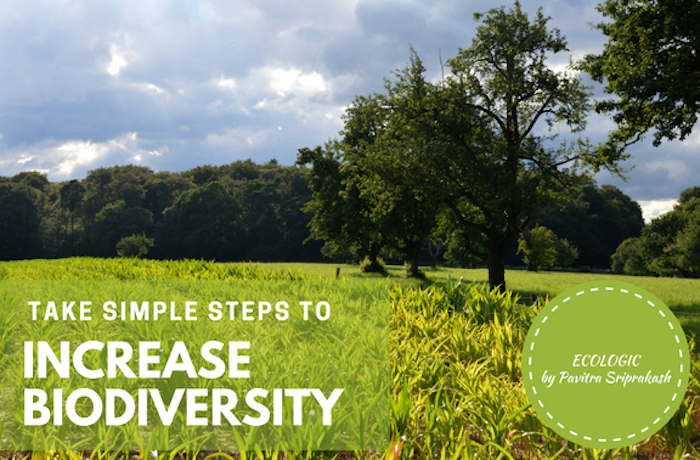May 26th 2018, New Indian Express: ECOLOGIC- Pavitra Sriprakash, the Chief Designer and Director of Shilpa Architects writes about simple ways to increase Biodiversity.
Read full article below:
22 May marked the 25th year of the International Day for Biological Diversity. NGOs, citizens and scientific communities world over came together to achieve the Aichi Biodiversity Targets (ABT) which is part of the Strategic Plan for Biodiversity 2011-2020. With five main strategic goals, the ABT strives primarily to address biodiversity loss by focusing on its causes. It also aims at making Biodiversity a mainstream issue for governments and societies.
Biological Diversity is the term given to the variety of life on Earth and the natural patterns it forms. The biodiversity we see today is the fruit of billions of years of evolution, shaped by natural processes and, increasingly of late, by the influence of humans. This diversity is often understood in terms of the wide variety of plants, animals and microorganisms. Scientists guess there are anywhere between 3 to 100 million species on the planet and yet, we have identified only 1.75 million species, mostly insects. Another aspect of biodiversity is the variety of ecosystems such as those that occur in deserts, forests, wetlands, mountains, lakes, rivers, and agricultural landscapes. In each ecosystem, living creatures including humans, form a community interacting with one another and with the air, water, and soil around them.
Recently as part of the move towards marketing sustainable lifestyles in new town developments, the word biodiversity has been increasingly used. This importantantly signals the awakening of cities to the importance of preserving and promoting biodiversity. Cities are home to more than half of the world’s population, and are responsible for a disproportionately large ecological footprint that threatens the health of our ecosystems. Biodiversity and ecosystems need to be valued and managed as part of cities’ infrastructure and integrated into all aspects of local governance including urban planning, financial planning, transportation, trade and economic incentive mechanisms, procurement policies, infrastructure development and services deliveries.
To promote biodiversity conservation, it is often suggested that cities manage the urban environment to benefit biodiversity. This could mean implementing planning policies that limit urban sprawl, promote the local landscape and manage urban agriculture by nurturing supply links to city markets. Cities should focus on sustainable consumption of resources that impact on biodiversity. Often public private partnerships help to raise awareness about the importance of biodiversity amongst the public at large. There are several global networks of cities with common goals regarding biodiversity that can also help them align toward a larger planetary goal.
A few simple change of habits and proactive actions can reduce many adverse environmental impacts and increase biodiversity. One of the simplest measures is to activate urban backyards which helps native pollinators. Even a balcony or a small garden can turn into a mini wildlife sanctuary. Native flowering plants require very little pesticides and thrive on just a little water. Insects and animals sustain on the water, nectar and safety provided, and they multiply to balance the local ecosystem. Arguably the biggest positive impact on the environment can be brought about by reducing consumption. The more we turn minimalists, less will be the habitats destroyed for resources or energy to make products we can forego, and fewer wastes will pollute the environment. The idea is “Own Less, Live More.”



